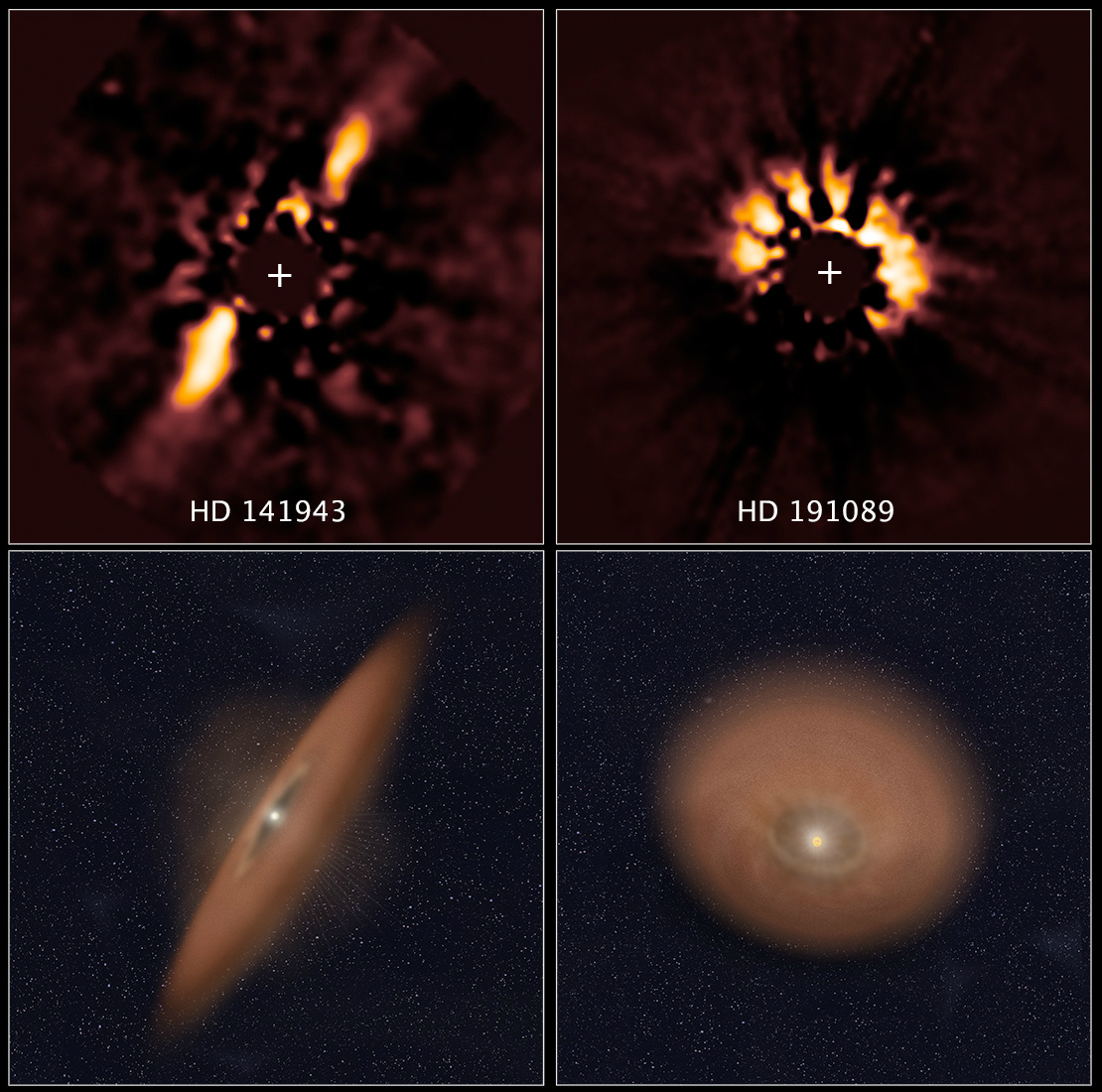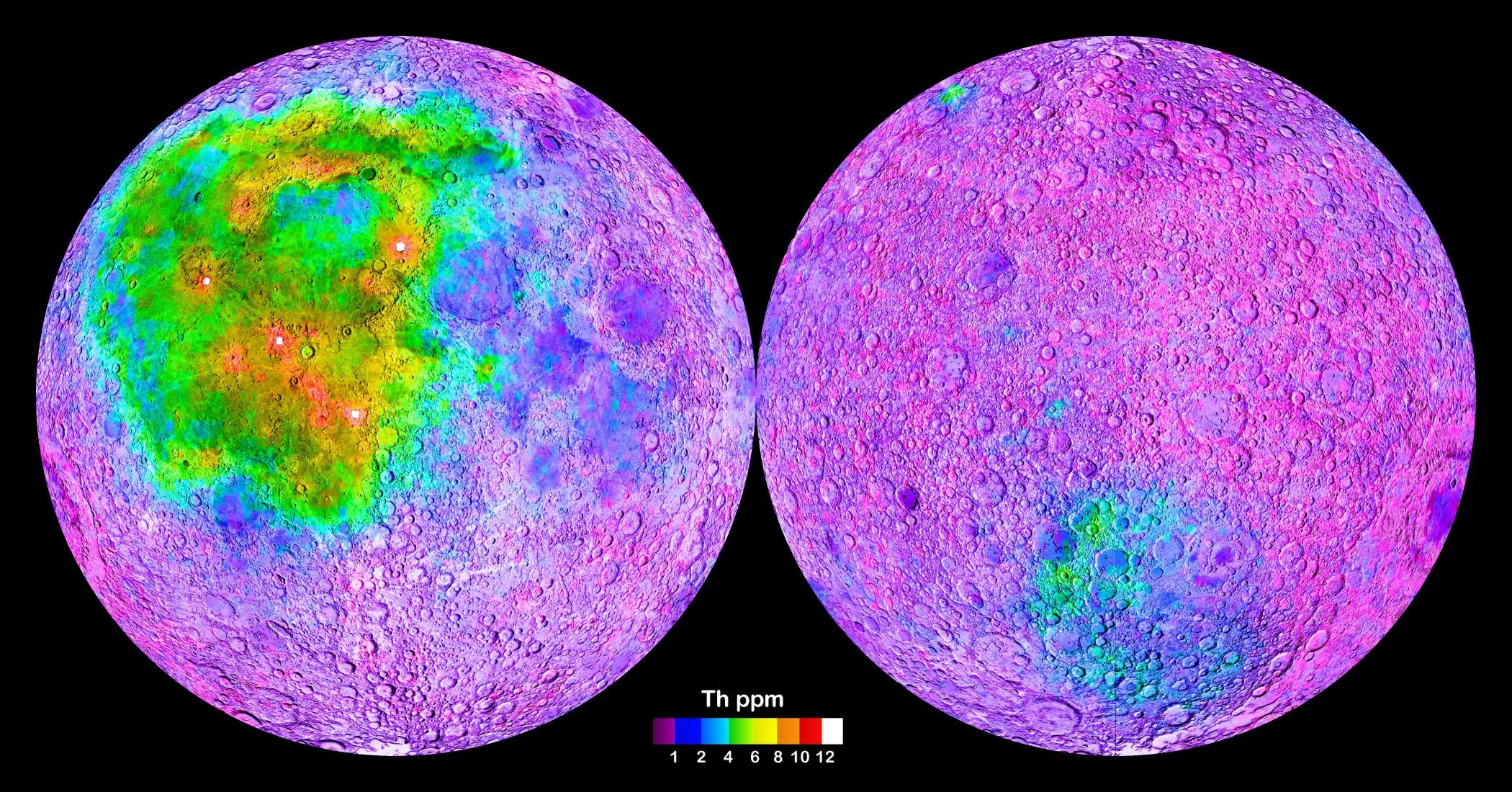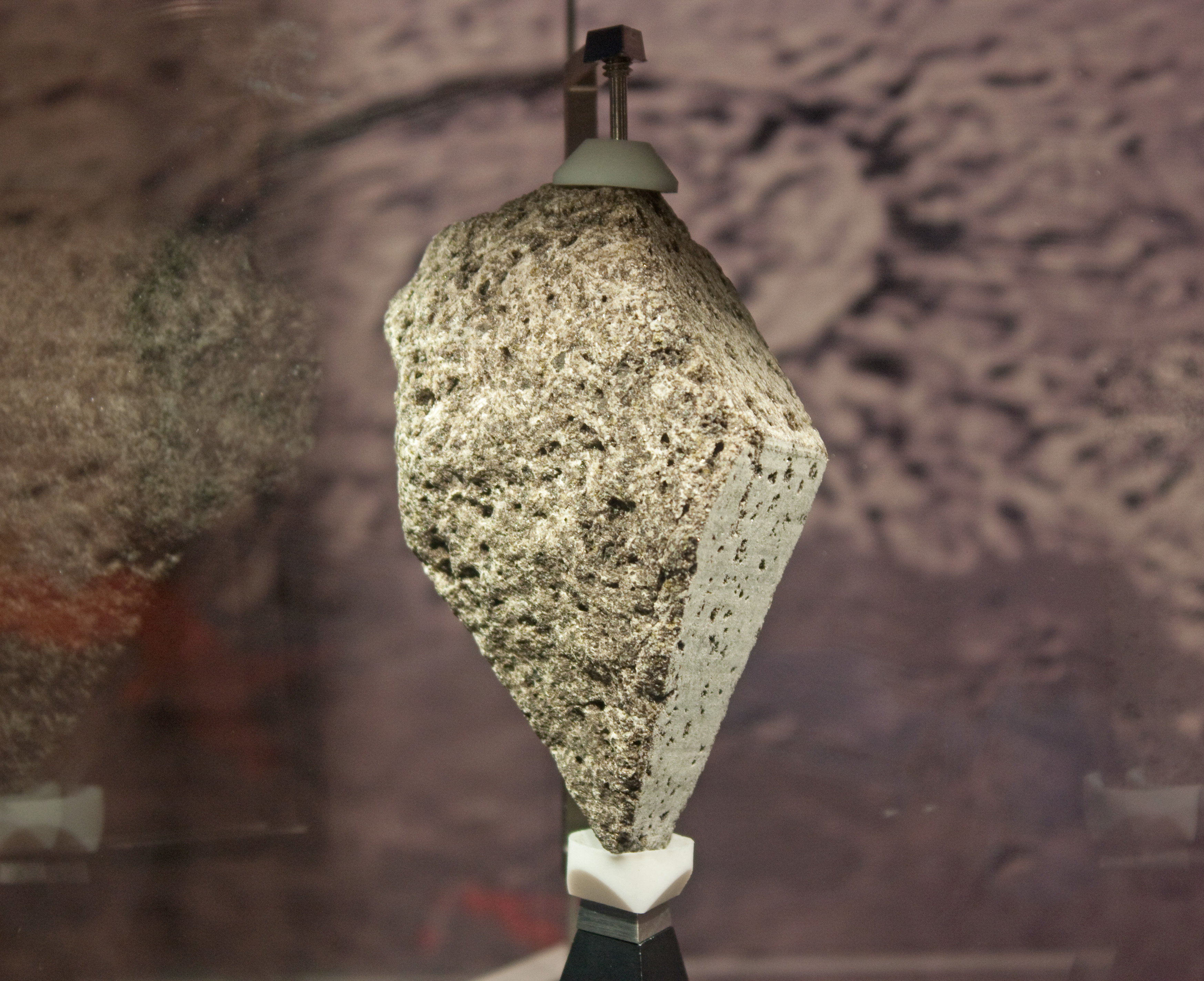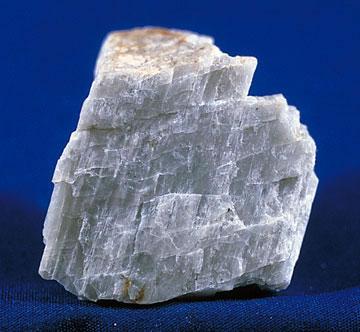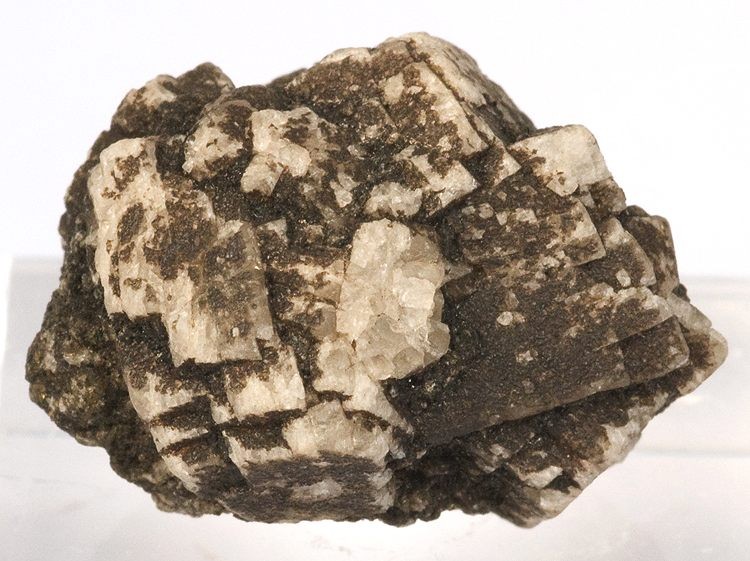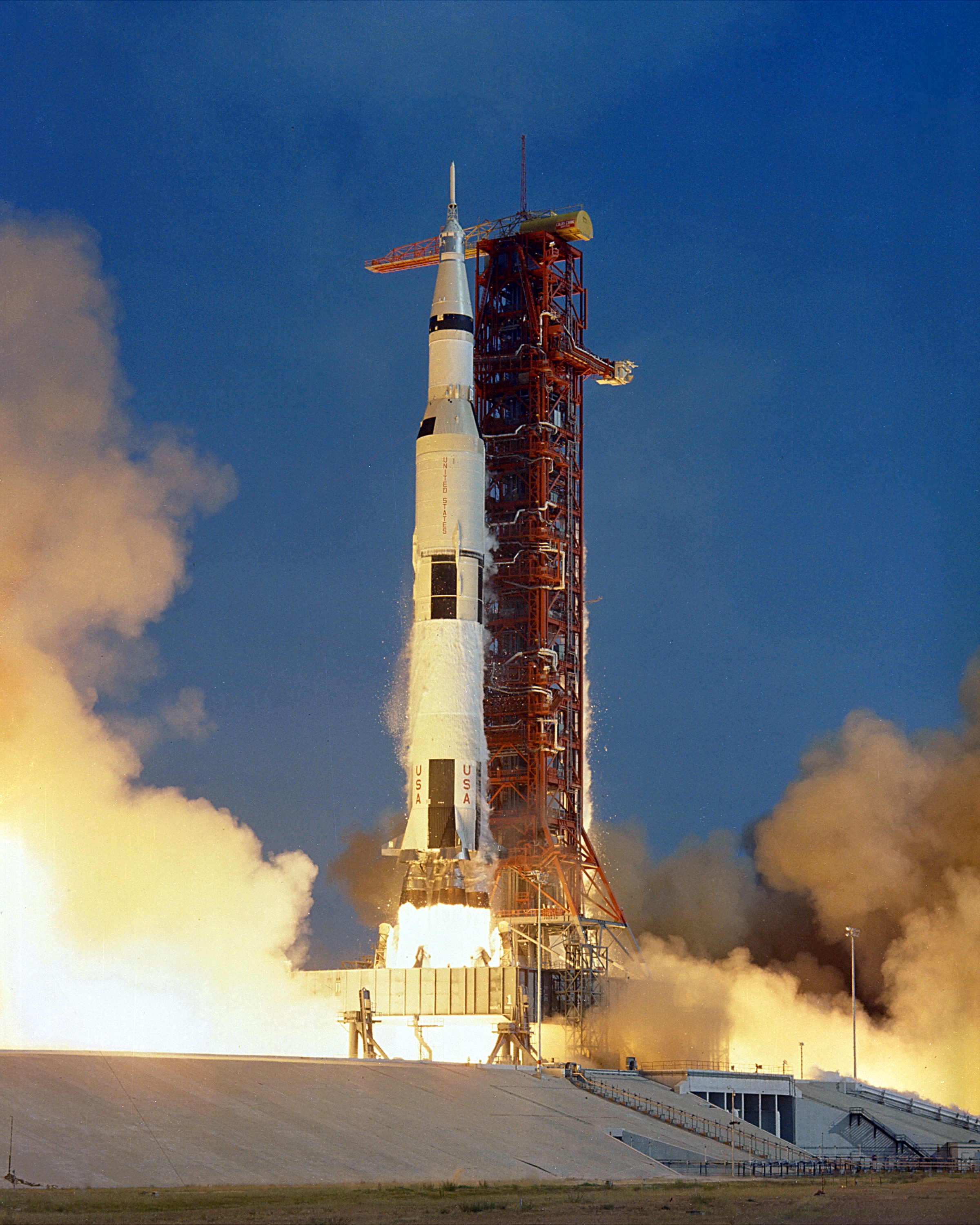|
Magma Ocean
Magma oceans are vast fields of surface magma that exist during periods of a planet's or some natural satellite's accretion when the celestial body is completely or partly molten. In the early Solar System, magma oceans were formed by the melting of planetesimals and planetary impacts. Small planetesimals are melted by the heat provided by the radioactive decay of aluminium-26. As planets grew larger, the energy was then supplied from giant impacts with other planetary bodies. Magma oceans are integral parts of planetary formation as they facilitate the formation of a core through metal segregation and an atmosphere and hydrosphere through degassing. Evidence exists to support the existence of magma oceans on both the Earth and the Moon. Magma oceans may survive for millions to tens of millions of years, interspersed by relatively mild conditions. Magma ocean heat sources The sources of the energy required for the formation of magma oceans in the early solar system were the ... [...More Info...] [...Related Items...] OR: [Wikipedia] [Google] [Baidu] |
Volcanic Planet 5 R 1
A volcano is commonly defined as a vent or fissure in the crust of a planetary-mass object, such as Earth, that allows hot lava, volcanic ash, and gases to escape from a magma chamber below the surface. On Earth, volcanoes are most often found where tectonic plates are diverging or converging, and because most of Earth's plate boundaries are underwater, most volcanoes are found underwater. For example, a mid-ocean ridge, such as the Mid-Atlantic Ridge, has volcanoes caused by divergent tectonic plates whereas the Pacific Ring of Fire has volcanoes caused by convergent tectonic plates. Volcanoes resulting from divergent tectonic activity are usually non-explosive whereas those resulting from convergent tectonic activity cause violent eruptions."Mid-ocean ridge tectonics, volcanism and geomorphology." Geology 26, no. 455 (2001): 458. https://macdonald.faculty.geol.ucsb.edu/papers/Macdonald%20Mid-Ocean%20Ridge%20Tectonics.pdf Volcanoes can also form where there is stretching an ... [...More Info...] [...Related Items...] OR: [Wikipedia] [Google] [Baidu] |
Planetesimal
Planetesimals () are solid objects thought to exist in protoplanetary disks and debris disks. Believed to have formed in the Solar System about 4.6 billion years ago, they aid study of its formation. Formation A widely accepted theory of planet formation, the planetesimal hypothesis of Viktor Safronov, states that planets form from cosmic dust grains that collide and stick to form ever-larger bodies. Once a body reaches around a kilometer in size, its constituent grains can attract each other directly through mutual gravity, enormously aiding further growth into moon-sized protoplanets. Smaller bodies must instead rely on Brownian motion or turbulence to cause the collisions leading to sticking. The mechanics of collisions and mechanisms of sticking are intricate. Alternatively, planetesimals may form in a very dense layer of dust grains that undergoes a collective gravitational instability in the mid-plane of a protoplanetary disk—or via the concentration and gravitatio ... [...More Info...] [...Related Items...] OR: [Wikipedia] [Google] [Baidu] |
Europium Anomaly
The europium anomaly refers to the enrichment or depletion of the europium concentration in a mineral or rock compared to neighboring rare-earth elements also present in the material. This anomaly is typically evaluated relative to a common standard such as a chondrite or mid-ocean ridge basalt (MORB). In geochemistry a europium anomaly is said to be "positive" if the Eu concentration in the mineral is enriched relative to the other rare-earth elements (REEs), and is said to be "negative" if Eu is depleted relative to the other REEs. Oxidation States and Partitioning Behavior Most REEs exist in the trivalent state (3+), but europium and cerium (Ce) exhibit additional oxidation states that affect their geochemical behavior. Europium can be reduced to Eu²⁺, especially under reducing magmatic conditions making it immiscible with other REEs. Meanwhile, cerium may be oxidized to Ce⁴⁺. These alternate valences impact how the elements partition between minerals. Eu (2+) cations ... [...More Info...] [...Related Items...] OR: [Wikipedia] [Google] [Baidu] |
Anorthosite
Anorthosite () is a phaneritic, intrusive rock, intrusive igneous rock characterized by its composition: mostly plagioclase feldspar (90–100%), with a minimal mafic component (0–10%). Pyroxene, ilmenite, magnetite, and olivine are the mafic minerals most commonly present. Anorthosites are of enormous geologic interest, because it is still not fully understood how they form. Most models involve fractional crystallization (geology), separating plagioclase crystals based on their density. Plagioclase crystals are usually less dense than magma; so, as plagioclase crystallizes in a magma chamber, the plagioclase crystals float to the top, concentrating there. Anorthosite on Earth can be divided into five types: # Archean anorthosites # Proterozoic anorthosite (also known as massif or massif-type anorthosite) – the most abundant type of anorthosite on Earth # Layers within Layered intrusion, Layered Intrusions (e.g., Bushveld Igneous Complex, Bushveld and Stillwater igneous com ... [...More Info...] [...Related Items...] OR: [Wikipedia] [Google] [Baidu] |
KREEP
KREEP, an acronym built from the letters K (the atomic symbol for potassium), REE (rare-earth elements) and P (for phosphorus), is a geochemical component of some lunar impact breccia and basaltic rocks. Its most significant feature is somewhat enhanced concentration of a majority of so-called "incompatible" elements (those that are concentrated in the liquid phase during magma crystallization) and the heat-producing elements, namely radioactive uranium, thorium, and potassium (due to presence of the radioactive 40K). Typical composition The typical composition of KREEP includes about one percent, by mass, of potassium and phosphorus oxides, 20 to 25 parts per million of rubidium, and a concentration of the element lanthanum that is 300 to 350 times the concentrations found in carbonaceous chondrites. Most of potassium, phosphorus and rare-earth elements in KREEP basalts are incorporated in the grains of the phosphate minerals apatite and merrillite. Possible origin Indirect ... [...More Info...] [...Related Items...] OR: [Wikipedia] [Google] [Baidu] |
Mare Basalts
Moon rock or lunar rock is rock originating from Earth's Moon. This includes lunar material collected during the course of human exploration of the Moon, and rock that has been ejected naturally from the Moon's surface and landed on Earth as lunar meteorites. Sources Moon rocks on Earth come from four sources: those collected by six United States Apollo program crewed lunar landings from 1969 to 1972; those collected by three Soviet uncrewed Luna probes in the 1970s; those collected by the Chinese Lunar Exploration Program's uncrewed probes; and rocks that were ejected naturally from the lunar surface before falling to Earth as lunar meteorites. Apollo program Six Apollo missions collected 2,200 samples of material weighing , processed into more than 110,000 individually cataloged samples. Luna program Three Luna spacecraft returned with of samples. The Soviet Union abandoned its attempts at a crewed lunar program in the 1970s, but succeeded in landing three robotic ... [...More Info...] [...Related Items...] OR: [Wikipedia] [Google] [Baidu] |
Plagioclase Feldspar
Plagioclase ( ) is a series of tectosilicate (framework silicate) minerals within the feldspar group. Rather than referring to a particular mineral with a specific chemical composition, plagioclase is a continuous solid solution series, more properly known as the plagioclase feldspar series. This was first shown by the German mineralogist Johann Friedrich Christian Hessel (1796–1872) in 1826. The series ranges from albite to anorthite endmembers (with respective compositions NaAlSi3O8 to CaAl2Si2O8), where sodium and calcium atoms can substitute for each other in the mineral's crystal lattice structure. Plagioclase in hand samples is often identified by its polysynthetic crystal twinning or " record-groove" effect. Plagioclase is a major constituent mineral in Earth's crust and is consequently an important diagnostic tool in petrology for identifying the composition, origin and evolution of igneous rocks. Plagioclase is also a major constituent of rock in the highlands of ... [...More Info...] [...Related Items...] OR: [Wikipedia] [Google] [Baidu] |
Anorthite
Anorthite (< ''an'' 'not' + ''ortho'' 'straight') is the of the plagioclase feldspar mineral series. The chemical formula of pure anorthite is Ca Al2 Si2O8. Anorthite is found in s. Mineralogy [...More Info...] [...Related Items...] OR: [Wikipedia] [Google] [Baidu] |
List Of Apollo Missions
The Apollo program was a United States human spaceflight program carried out from 1961 to 1972 by the NASA, National Aeronautics and Space Administration (NASA), which landed the first List of Apollo astronauts, astronauts on the Moon. The program used the Saturn IB and Saturn V launch vehicles to lift the Apollo command and service module, Command/Service Module (CSM) and Apollo Lunar Module, Lunar Module (LM) spacecraft into space, and the Little Joe II rocket to test a launch escape system which was expected to carry the astronauts to safety in the event of a Saturn failure. Uncrewed test flights beginning in 1966 demonstrated the safety of the launch vehicles and spacecraft to carry astronauts, and four crewed flights beginning in October 1968 demonstrated the ability of the spacecraft to carry out a lunar landing mission. Apollo achieved the first crewed lunar landing on the Apollo 11 mission, when Neil Armstrong and Buzz Aldrin landed their Lunar Module Eagle, LM ''Eagle'' i ... [...More Info...] [...Related Items...] OR: [Wikipedia] [Google] [Baidu] |
Lunar Magma Ocean White Background
Lunar most commonly means "of or relating to the Moon". Lunar may also refer to: Arts and entertainment * ''Lunar'' (series), a series of video games * "Lunar" (song), by David Guetta * "Lunar", a song by Priestess from the 2009 album ''Prior to the Fire'' * Lunar Drive-in Theatre, in Dandenong, Victoria, Australia * Lunars, a fictional race in the series ''The Lunar Chronicles'' by Marissa Meyer Other uses * Lunar dynasty, a legendary house of warrior–rulers in ancient Indian texts * Lunar Magic, Super Mario World level editor * Lunar Design, or LUNAR, a San Francisco-based design consultancy * Hasselblad Lunar, a digital camera * Lunar, a brandname of Ethinylestradiol/cyproterone acetate, a birth control pill * Lunar C (Jake Brook, born 1990), English rapper * LUNAR (software) (1970–1972), question-answering system by Bill Woods (computer scientist) See also * * * Lunar calendar A lunar calendar is a calendar based on the monthly cycles of the Moon's phases ( synod ... [...More Info...] [...Related Items...] OR: [Wikipedia] [Google] [Baidu] |
Giant-impact Hypothesis
The giant-impact hypothesis, sometimes called the Theia Impact, is an astrogeology hypothesis for the formation of the Moon first proposed in 1946 by Canadian geologist Reginald Daly. The hypothesis suggests that the Early Earth collided with a Mars-sized protoplanet of the same orbit approximately 4.5 billion years ago in the early Hadean eon (about 20 to 100 million years after the Solar System coalesced), and the ejecta of the impact event later accreted to form the Moon. The impactor planet is sometimes called Theia, named after the mythical Greek Titan who was the mother of Selene, the goddess of the Moon. Analysis of lunar rocks published in a 2016 report suggests that the impact might have been a direct hit, causing a fragmentation and thorough mixing of both parent bodies. The giant-impact hypothesis is currently the favored hypothesis for lunar formation among astronomers. Evidence that supports this hypothesis includes: * The Moon's orbit has a sim ... [...More Info...] [...Related Items...] OR: [Wikipedia] [Google] [Baidu] |


